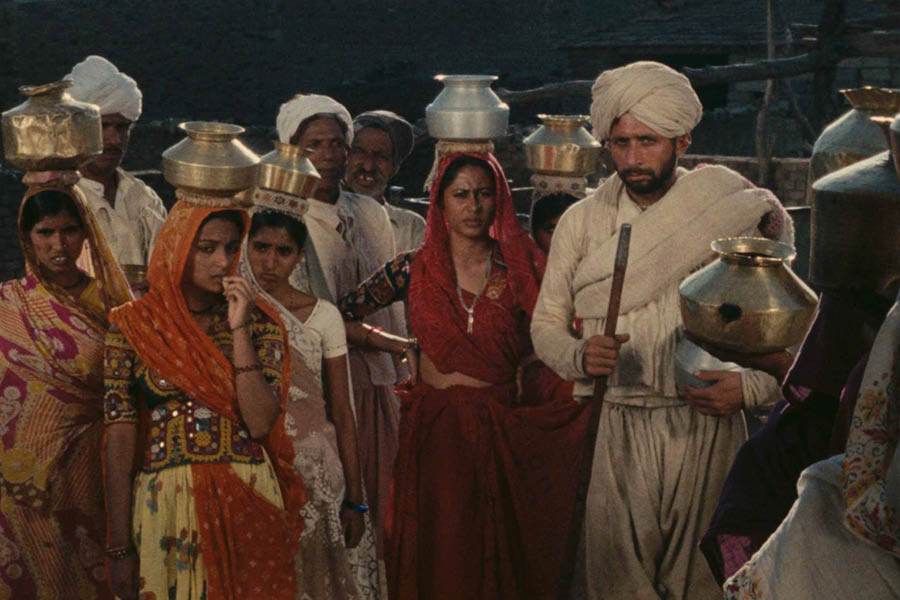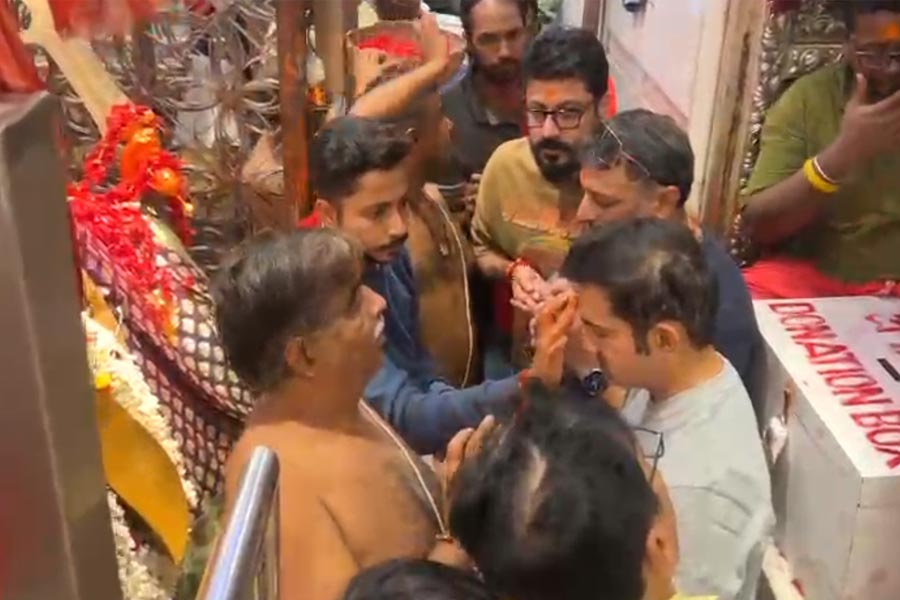Much before the word crowd-funded was part of our cinematic lexicon, Manthan was exactly that. Unlike recent examples of crowd-funded films where tech-savvy filmmakers reach out on social media to source funds for their passion projects, Manthan was funded by 500,000 farmers of Gujarat, each of whom donated Rs 2 each to produce the film, leading to the now iconic opening credits that say ‘500,000 Farmers of Gujarat Present’.
If that was historic enough, the restoration of the film by Film Heritage Foundation (FHF) and the encomiums that have come its way 48 years later is creating history of another kind. After a standing ovation at Cannes 2024, where it was as much a success as Payal Kapadia and Anasuya Sengupta, the restored version of the film is set to release in over 100 cinemas spread across 50 cities in India. It is debatable whether the film garnered as many shows when it first released in 1976.
After the grand success of Bachchan Back to the Beginning, Dilip Kumar Hero of Heroes and the Dev Anand film festival in 2022 and 2023, Manthan is another feather in FHF’s cap. With Maya Miriga to follow soon after, Raj Kapoor’s 100 Year Celebrations later this year and the Guru Dutt centenary celebrations in 2025, the Foundation under Shivendra Singh Dungarpur’s stewardship is changing the contours of India’s cinematic heritage one film at a time.
What prompted you to take on Manthan over, say, an Ankur or Bhumika, for the restoration?
Shivendra Singh Dungarpur: We started the journey thinking of restoring Shyam Benegal’s early films, because 2024 happens to be Shabana Azmi’s 50th anniversary in cinema as also Ankur’s. We wanted to do Bhumika because it also talks about the history of cinema. It was shot in Jyoti Studio, which was the former Imperial Studio. However, we realised that as far as Shyam Benegal’s films with Blaze are concerned, which included Ankur, Nishant and Bhumika, the rights were already sold to Shemaroo. There is a dispute about who owned these.
The story of Manthan began in 2014. It was the year we set up the Film Heritage Foundation. Shyam Benegal was one of the very first people to donate all his archival material – photographs, lobby cards, scripts. With that he handed over a 35mm print of Manthan which he said was one of his favourite films. The print had run in many theatres before. At that point we were starting the Foundation and I didn’t even know where to start. We didn’t have the funds either.
It was only as we started restoring other films that it kept playing on my mind that the early films of Shyam Benegal had not been restored. So we started the journey one and a half years ago. And we spoke to Shyam Babu, to the Gujarat Cooperative Milk Federation, which is now called Amul. It took us a while to make them understand why this was necessary. They kept saying that it’s on YouTube, why do you need to restore? This is the general apprehension of people. They do not know that what is on YouTube is mostly what they got from Umatic or beta or DG, and it’s low resolution. Those formats cannot be played on screen. It is important to go back to the negative and restore. They said they had deposited a negative sometime back at the National Film Archive of India. So we went and got the negative. There was no sound negative, the sound had disappeared. We had a couple of prints which Shyam Babu had given us and the restoration began.
When did you first watch Manthan and what was the experience like? What are your memories from that?
Shivendra Singh Dungarpur: Manthan is our childhood memory, it’s our growing-up memory. The image of a woman in a village in Gujarat carrying those matkas, that famous song of Preeti Sagar. Those are embedded in our memories. I remember it from the days of watching films on Doordarshan. We didn’t at that point understand the importance of Manthan as part of the whole white revolution. As I became a film student and when Manthan was screened at the FTII, I understood the enormity of what the film was.
At the Foundation, we are trying to find regional cinema, the true cinema of India, which represents its people, the culture, the art, the music, the folklore, the various complexities of existence within the Indian community and its varied people. It’s truly what makes India so special, its diversity, and Manthan is one such important film. It’s so modern. It talks about caste, women empowerment, complexities of life in a village; it talks about the milk revolution; it talks about forming a cooperative and it talks about the journey that Dr Kurien made and how beautifully Shyam Benegal captured that through the cast – some of the greatest actors India has produced… Naseeruddin Shah, Smita Patil, Girish Karnad, Sadhu Mehar, Kulbhushan Kharbanda, Amrish Puri. It was written by Vijay Tendulkar. And what about Govind Nihalani’s work? Extraordinary, you know.
We couldn’t differentiate the actors from the actual villagers. We always thought Naseeruddin Shah and Smita Patil were part of the village community. When you think of restoring a film like this, you’re restoring a national treasure, you’re restoring a heritage. Also one important thing is that FHF has always felt the necessity to restore regional cinema, artistic cinema. We did that with Thamp and Kummatty. We did that with Ishanou, a Manipuri film. We are doing Ghatashraddha, a Kannada film. We are doing In Which Annie Gives It Those Ones. We did Manthan.
Every restoration comes with its own particular requirements. What was the condition of the original and what were the challenges in the restoration that were specific to this?
Shivendra Singh Dungarpur: The most important element in restoration is the original camera negative, the negative which has gone through the camera. It’s almost like the mother. So when we realised that the original camera negative had green moulds, the colour had faded, it had flicker, apart from scratches and lots of other problems, we started looking at the print Shyam Benegal had given to us. We called all the archives around the world to check whether there was any material of Manthan and we found that the prints available were not complete. When a 35mm print goes for projection several times, there are projectionists who tend to do a few cuts because it gets trapped on the projector.
So we had to first do what is called film comparison, putting the elements together. There was a lot of painstaking work on the restoration of this film because all the green moulds had to be worked upon. The important thing is that the film was shot in 1975. Mr Benegal and Govind Nihalani said that it was shot in varied stock. It was shot in winter but there was top sun in it. The beauty of the village landscape that Govind Nihalani shot, printed in a stock called Orwo, had not given the results one would expect.
We worked with both Shyam Babu and Govind Nihalani on the restoration. Since the colour was faded, we went back to the material Shyam Benegal had donated to us. We found some photographs. We looked at the colours of the photographs and we spoke to the colorist to see if we could match the film to the photographs. We also tried to get photographs of the village of Sanganava and once we had that kind of look, we took it to Shyam Babu and to Govind-ji and we asked them if this was what they had in mind. When they saw the film, they said they had imagined the film exactly like that and that finally they could see those colours. ‘After 48 years we can see what we wanted in the film,’ they said, and I think that was the biggest success of our restoration. The sound was the most difficult part because it was not syncing, there was no sound negative left, we had to take it from different elements, put it together. Finally we were able to restore it and show it in Cannes and now we are releasing the film here.
Your next project Maya Miriga is already making news.
Shivendra Singh Dungarpur: It’s been the toughest restoration we have done. We started three years ago. I think it’s one of the most beautiful films of the new wave. The journey for Maya Miriga began when I was shooting for Celluloid Man. P.K. Nair saab would often talk about Nirad Mohapatra, who studied at the Institute. It’s the only film he made.
His son, Sandeep Mohapatra, approached me three years ago saying that he was finding it difficult to find anything on Maya Miriga. He was trying to reach the NFAI and other institutions. The original negative was lost. He didn’t know where it was. It was processed in a lab in Chennai and after that there was no track of it. He approached us for help. The journey began with Sandeep Mohapatra and Professor Surendra Chaudhary, who was my professor at the FTII, who wrote to me saying that it was one of the most beautiful films of the new wave. ‘You must restore it and must save it.’
We finally found the original camera negative, which was on 16mm, in a godown. It was quite disheartening. We brought it back to Mumbai. We started working on it frame by frame. The sprockets were broken. Emulsion had come off. The negative was in a poor state; we had to save the negative.
It is impossible to even imagine that Nirad Mohapatra had made the film out of leftover stock. He had no money to afford new stock. It is the toughest restoration we have worked on, because it was almost like resurrecting a film which had gone. What music by Bhaskar Chandavarkar. I am so glad that we restored it and it’s going to be shown at the Il Cinema Ritrovato festival in Bologna. I hope more and more people are able to see it. We want to bring it back to Odisha, where Nirad Mohapatra has a cult status.
FHF is fostering a viewership of both arthouse and commercial classics of Indian cinema.
Shivendra Singh Dungarpur: When you restore a film, if you don’t make it accessible to the public, there is no point restoring. One of the key things of restoration is accessibility. To show it back to the public and especially a film which was made through the contribution of 500,000 farmers who gave rupees 2 each to produce Manthan. What an extraordinary story! If you are not able to show it to the public, the whole point is lost. That’s why the tickets have been priced at Rs 100 only.
It’s releasing in 50 cities. Even Bachchan Back to the Beginning did not release in so many cities. Whether it’s Muzaffarpur, Patna, Jaipur, Trivandrum, Cochin, Hubli, or even Anand. We are releasing it in almost 100 cinemas. The idea is to reach out to everyone on June 1 and 2, to ask them to see it. And then of course, there’s a plan to show it to the villagers, the villagers of Sanganva and the villages of Gujarat, wherever we can take the film.
We are getting so many inquiries from around the world. So many people want to see the film. There have been inquiries from the UK, France, America. The response we are getting to the restored version is incredible. And what a response we got at Cannes. Naseeruddin Shah got a standing ovation for almost over five minutes for his performance.
(Shantanu Ray Chaudhuri is a film and music buff, editor, publisher, film critic and writer)











